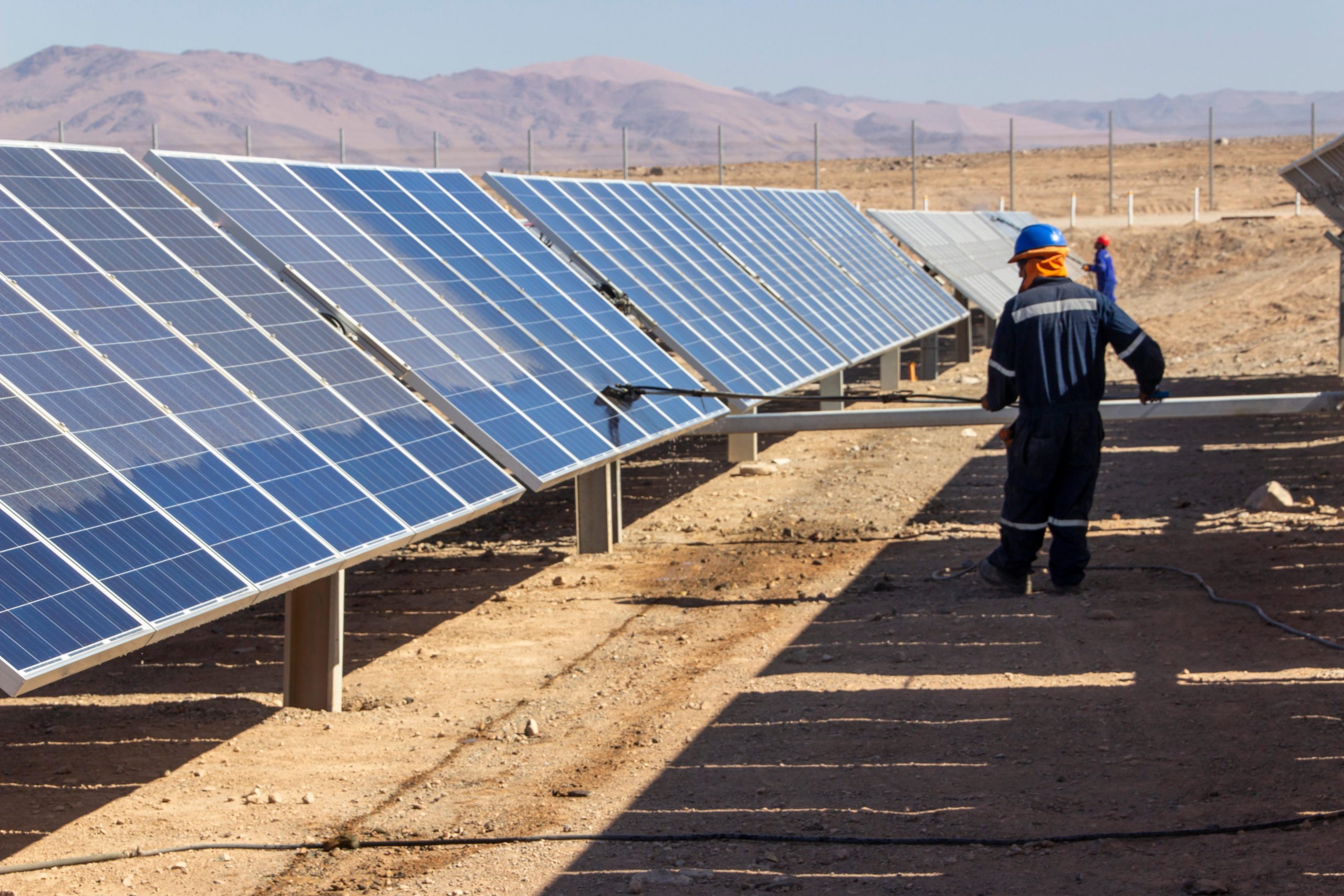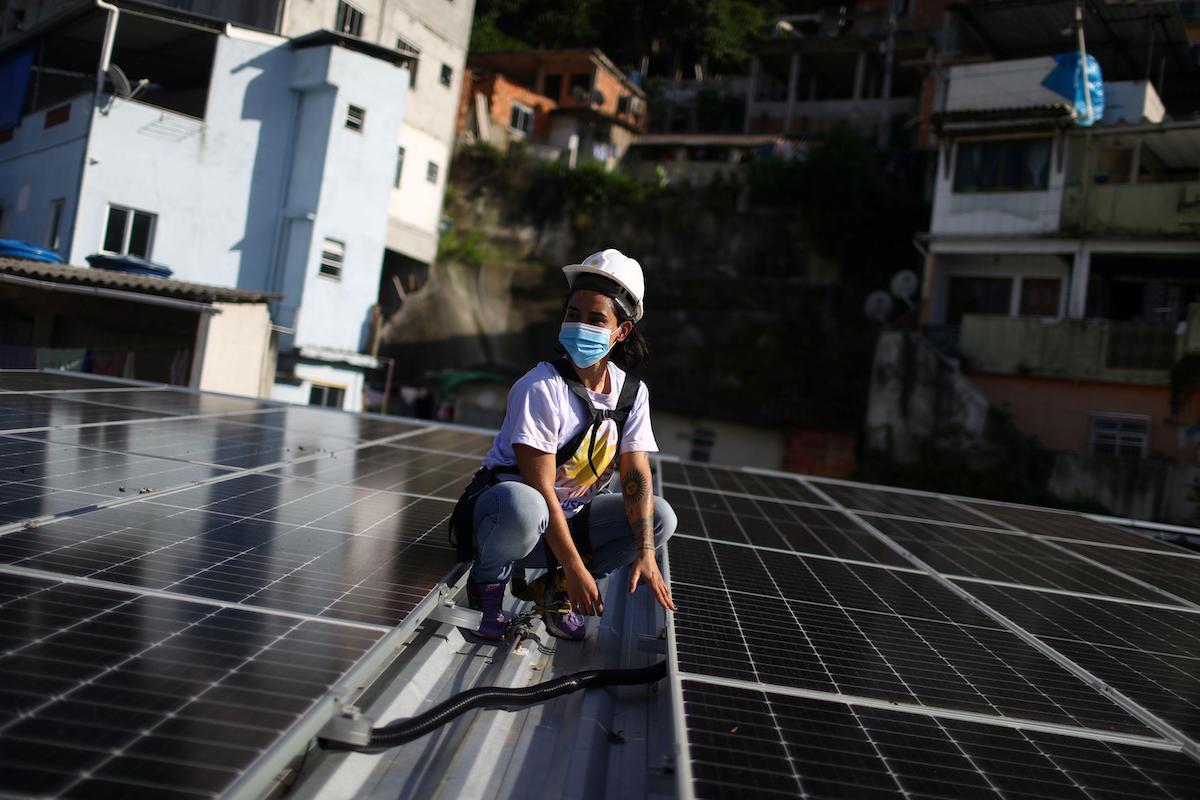Rising energy consumption and an associated hike in fossil fuel use outpaced growth in renewables last year, according to a new report by REN21, a global renewable energy policy network that brings together science, government, NGOs and industry.
REN21’s “Renewables 2022 Global Status Report” found that the share of renewables in global energy use stagnated in 2021, despite record additions of renewable power capacity. The war in Ukraine has now exacerbated the global energy crisis, generating big profits for fossil fuel companies as billions face the threat of energy poverty, the authors argued.
In an interview with Dialogo Chino, Rana Adib, Executive Director of REN21, described the disruption to the energy market caused by Russia’s war in Ukraine, and called on governments to ban fossil fuels. Adib said renewables are the lowest cost option, that do not require similar subsidies as the “crazy” handouts for oil and gas.

Diálogo Chino: Are fossil fuels making a comeback amid Russia’s invasion of Ukraine?
Rana Adib: We’ve never left fossil fuels. The share of renewable energy has largely expanded in the last decade but fossil fuels remain strong due to the increase in energy demand. This means the energy transition hasn’t happened yet – and this was true before the Ukraine crisis. We are now seeing a global energy crisis as the prices of fossil fuels have increased, leading to spikes in electricity prices and shortages. A few players have taken advantage of the situation, especially fossil fuel exporting countries or companies, while billions still face energy poverty. We are facing a critical choice today. But many governments go back to old recipes to address this, and this creates a climate and economic risk.
DC: Do you expect the disruption to the energy market to be long-term?
RA: The conflict has accelerated a structural problem that is there: the high dependence on some players and their decisions. That has a big impact on our economy and society. The learning that comes out of the conflict is that we have to move away from fossil fuels. Not just for climate reasons, but also for political and economic ones. Governments have to stop subsidising fossil fuels, with 115 countries still doing this. It’s US$11 million per minute, a crazy amount of money. Also, they should include energy efficiency and renewable energy as a short-term answer. This would allow having an energy system that doesn’t depend on price fluctuations.
As you say, governments allocate billions of dollars in subsidies to the fossil fuel sector every year. Can these be reallocated to better support renewable energy?
Renewable energy doesn’t need to be subsidised – it’s the lowest cost option, there’s no cheaper way of producing electricity. What needs to happen is having the right policy and regulating frameworks, such as market reforms. It’s a regulatory issue, as well as an awareness one, as we need societal support for the transition.
Renewable energy doesn’t need to be subsidised – it’s the lowest cost option, there’s no cheaper way of producing electricity
Also, it’s not enough to support renewable and energy efficiency, we have to ban fossil fuels too. The decision in Europe of banning the internal combustion engine is very important, as it will also accelerate the transformation of the transportation sector, which is lagging behind.
Latin America is attempting to support an energy transition with extensive use of the untapped natural gas resources across the region. What are the risks associated with following this strategy in terms of costs and ‘stranded assets’?
The answers for the energy transition for a country that has natural gas resources aren’t the same as for one that doesn’t have them and spends a lot of money importing them. For the latter, it’s very clear they have an opportunity today to build up a different energy system, which would also be more affordable. For a country that has natural gas resources, if they use them for economic benefit, these have to be directly invested in building up clean energy infrastructure.

Finance remains a big hurdle for the expansion of renewable energy in many markets, with Latin America facing higher capital costs than other parts of the world. How can this be addressed to boost renewables even further?
We hear very often in developing countries that they depend on capital coming from abroad for their renewable sector. This usually comes with high capital costs due to the interest rate and governance, among other factors. Addressing this requires collaboration with international development banks and local banks, so the latter can understand renewables are a good investment. That way we can ensure there’s local capital in local currency. Also, we need guarantee mechanisms at a regional level so private finance can go into those markets.
Most countries in Latin America face difficulties in their energy transition adding value to their economy, from extracting lithium but not producing batteries, for example, to importing all the elements for a wind farm or solar park. What would it take to further develop domestic industries?
When we speak about moving to renewable energy, it’s not just a fuel shift but also about building up industrial value chains and creating local jobs. Not every country will start producing solar PV panels and we have to be realistic about this. Countries will have to collaborate to take advantage of each other’s capabilities. Renewable energy has to become a KPI [key performance indicator] for any economic activity. These discussions have to happen in collaboration with every area of government.

As well as solar and wind, Latin America is currently exploring a new green hydrogen market, which Europe has shown interest in amid tensions in its energy market. Are you hopeful for this new market? Can it trigger further renewable energy expansion?
Hydrogen demand has historically been driven by the natural gas industry. But as gas prices now go up it’s clear we need renewables-based hydrogen. The costs of electrolysis [the application of an electrical charge to water to separate the oxygen and hydrogen atoms] are going down and it’s entering an area where it can be economically viable. This is really promising. But the reality is that the hydrogen economy has to be looked at on the whole value chain. If it’s renewable-based hydrogen, it means we have to increase our renewable-based power capacities. If you build up renewables you then have to ask whether this is to supply electricity to energy services or to transform it into hydrogen.
Do you expect the COP27 climate talks in November to bring renewable energy back to the table amid the disruption to the energy market?
Last year we had a massive increase in net-zero commitments by governments. But only 18% of countries worldwide have a 100% renewable energy target, as seen in our recent study. This means there’s not a clear acknowledgement in those net-zero pledges that this requires transforming the energy system. For COP27, we don’t just need further ambition, but also to translate this ambition into concrete action. This means phasing out fossil fuels and developing an efficient and renewable energy system. What I hope for COP27 is that we collectively make vocal support that a renewable-based future is better than a natural gas-based future.









